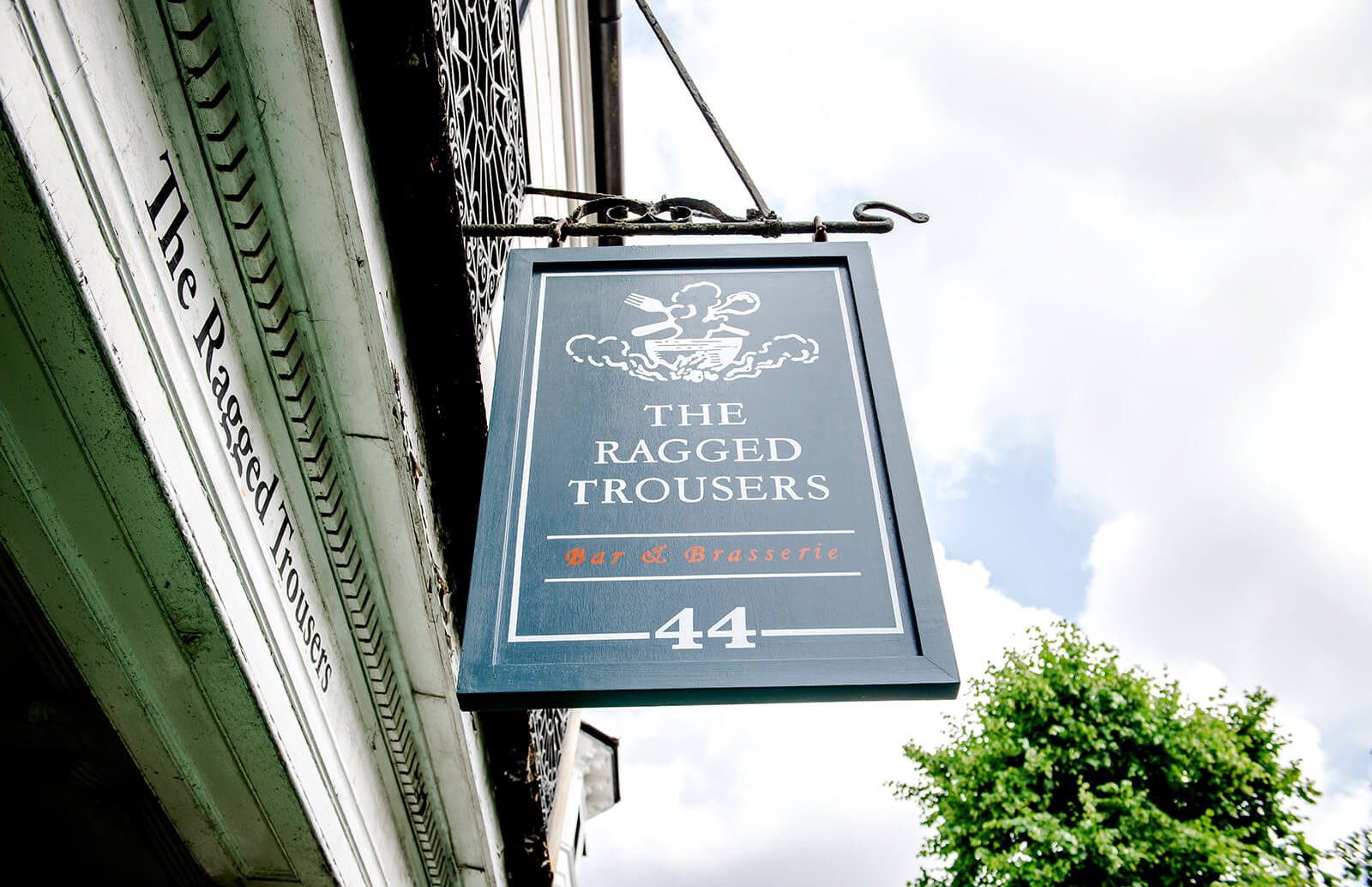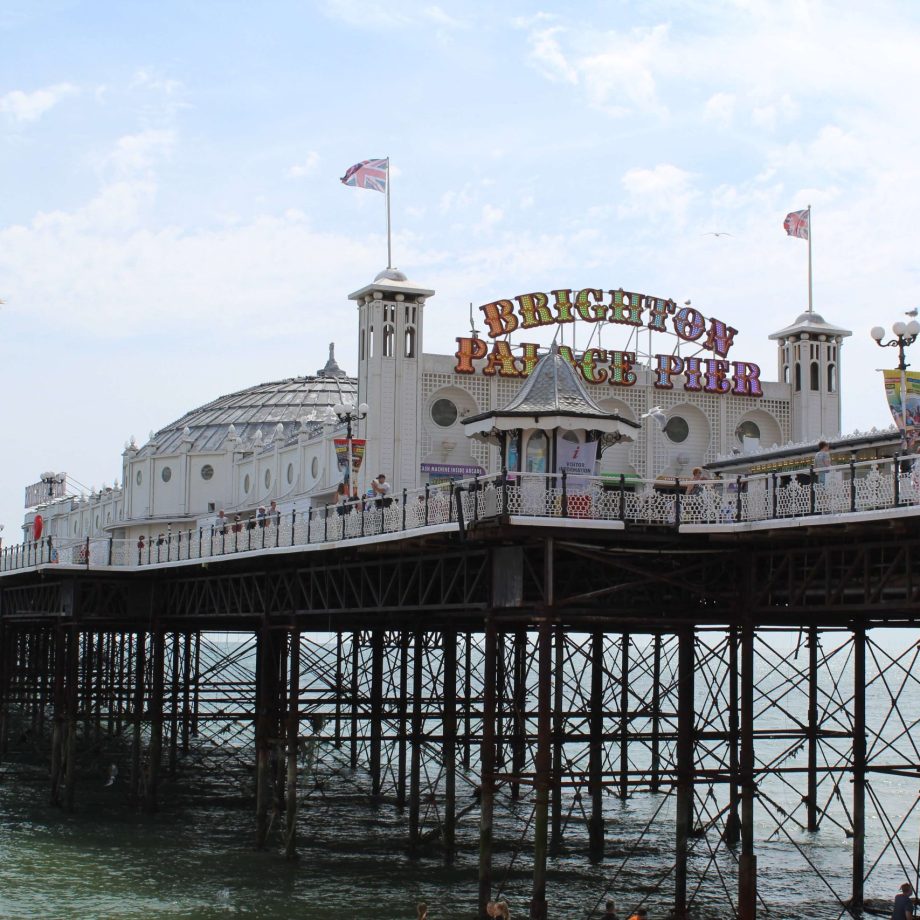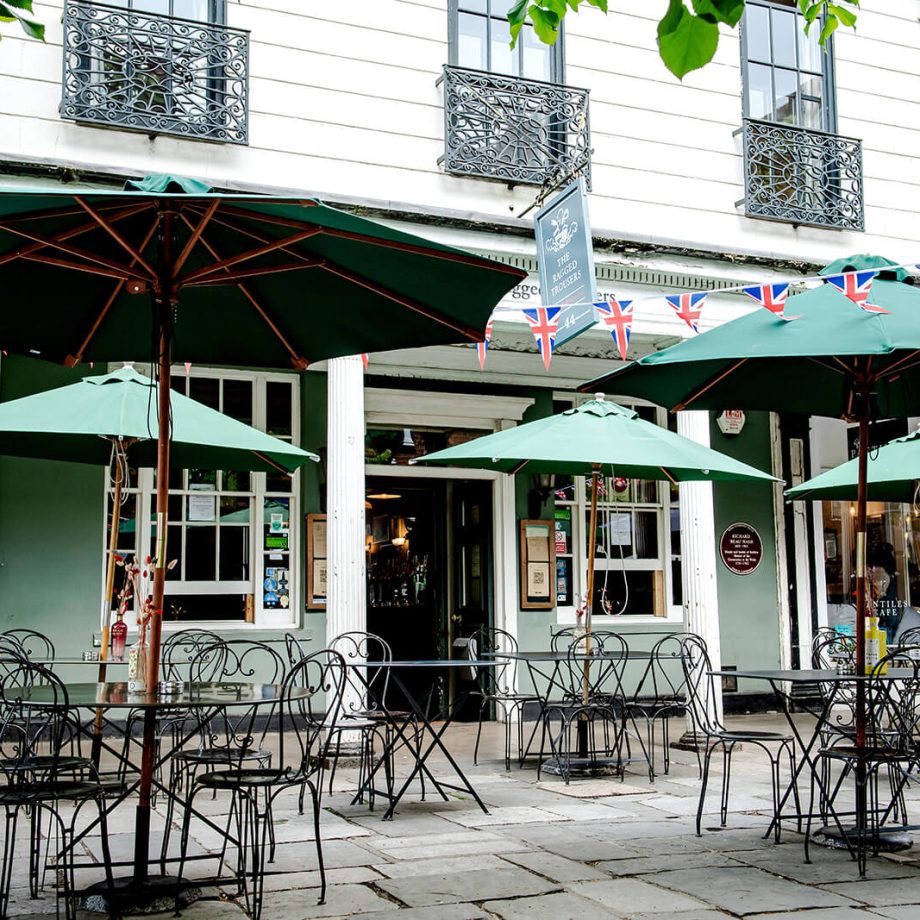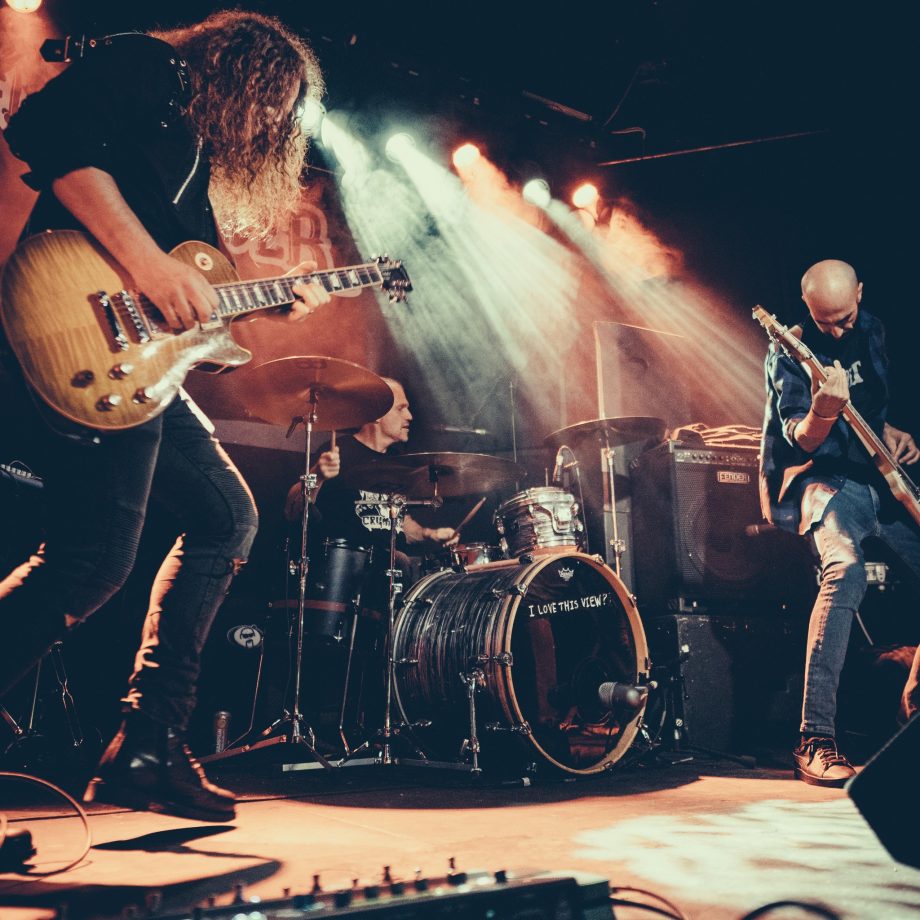Unearthing the origins of pub names is a bit like digging up treasure, each discovery offering an insight into the past. Sometimes, British pub names have been inspired by legendary and historical tales of battles and triumphant kings, and other times, by funny anecdotes and local folklore.
There are around 40,000 pubs in the UK, and their names are as varied as they are fascinating, ranging from the most popular, The Red Lion, to the more peculiar, like The Cat & Custard Pot.
For centuries, people have come together at the pub – not just to share laughter and friendly banter but to talk, catch up on local gossip, or delve into deep discussions on topics such as science, philosophy, literature, and even politics.
This is demonstrated quite well by a plaque on the George & Dragon in Yarm, North Yorkshire, proclaiming that on the 12th of February, 1820, the pub hosted the “Promoter’s Meeting” that led to the construction of the first public railway in the world.
Obviously, important things happen in pubs. And sometimes, pubs are so important that places are named after them.
So, grab a pint and find a cosy nook. In this post, we’ll cover the history of pub names and unveil some of the fascinating stories whispering from the signs above your favourite pubs’ doors!
Origins of Pub Names in Britain:
What Have the Romans Ever Done for Us?
It’s widely believed that the Romans hung vine leaves – in lieu of a sign – outside their Tabernae to indicate to the public that they sold wine. In Britain, vine leaves were not easy to get hold of, so the Romans turned to bushes instead, which led to pubs with names such as The Hollybush, The Ivy Bush, and The Bull & Bush.
The tradition continued centuries later when, in mediaeval times, publicans would hang or place distinctive objects outside their inns and alehouses for the same purpose. This gave rise to pub names such as The Plough, the Copper Kettle, and The Boot.
Influence of British History and Culture
It was only a matter of time before publicans replaced their telltale objects with some proper signage, but while the naming of alehouses and inns became quite common by the 12th century, most of the population was still illiterate. As such, pictures were used instead of lettering to identify the inns. It made sense to use pictures of barrels, barley, and hops to show that these establishments were selling beer, hence pub names such as The Three Barrels and The Hop Pole.
Hanging a sign outside a pub wasn’t compulsory until 1393 when an Act was passed to ensure all pubs and inns identified themselves officially. This was during the reign of King Richard II, and as such, many pubs adopted the King’s heraldic badge – The White Hart, while others paid homage to the king by using the image of a crown (hence, The Crown).
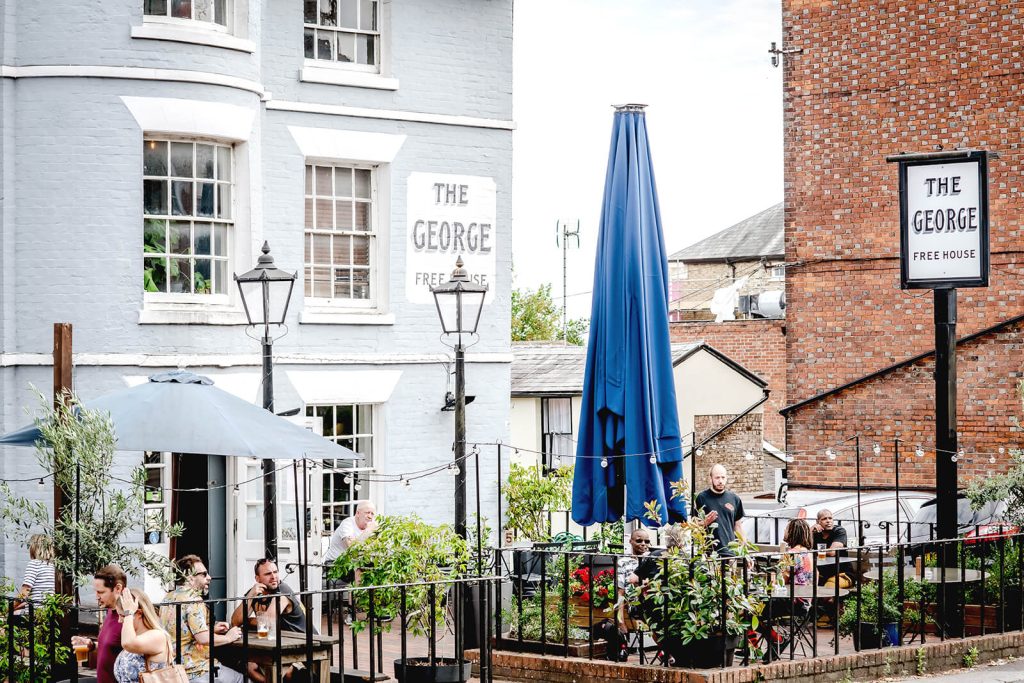
Thousands of pubs since followed the tradition with signs depicting portraits of their reigning monarch, establishing the popular King’s Head and the Queen’s Head names as well as several variations of Victoria, Henry, Charles, and George – in fact, our sister pub, The George, in Tunbridge Wells, was named after George II.
Historical Events
From commemorating victorious battles to celebrating the ends of wars, moments of history are painted all over pub signs across the country.
The Crusades
The Turk’s Head, The Saracen’s Head, and The Lamb and Flag can all be traced back to the Crusades, during which many inns catered to pilgrims and knights at several points along their journey to the Holy Land.
War of the Roses
When Henry Tudor married Elizabeth of York, pubs celebrated the union of the red rose of Lancaster and the white rose of York – which signified the end of the War of the Roses – with signs depicting a rose and crown. Rose & Crown remains a popular pub name today.
Dissolution of the Monasteries
With the Tudors’ reign came King Henry VIII and his Dissolution of the Monasteries between 1536 and 1541. Up until then, many pubs had taken religious names. These pubs swiftly changed their names to avoid penalty by association.
While some opted for safe choices such as King’s Head and Arms, others tried a subtle approach: The Ark was now known as The Ship and St Peter, Crossed Keys – the apostle’s symbol as the guardian of the gates of heaven.
Some pubs have retained names with a religious slant. Those named The Bell or The Angel were probably named so because they were located near a church, if not now, then at one point in time.
English Civil War
Along with The Red Lion and The Crown, The Royal Oak is one of the most popular pub names in Britain. These pubs are named for the oak tree that Prince Charles (later King Charles II) climbed and hid inside to escape the Roundheads after the Battle of Worcester in the English Civil War. When safe, the prince climbed down the oak and fled to France. On the Restoration of the Monarchy, Charles was named king, and his Birthday (29th of May) was declared Royal Oak Day.
Battle of Trafalgar
Admiral Lord Nelson’s victory over the French and Spanish Fleets during the Battle of Trafalgar spawned pub names such as Nelson, Trafalgar and Trafalgar Arms. Many of these pubs are in London, though there are a few Nelsons in Norfolk, where Horatio Nelson was born.
Later, the Duke of Wellington’s victory in the ground Battle of Waterloo spawned pub names such as The Duke, The Wellington, Wellington Arms, and The Duke of Wellington.
Common Themes in British Pub Names
You don’t have to be a keen observer to notice running themes in British pub names. Animals are common, as is the word “Arms” and, curiously, the number three. We explain this one below!
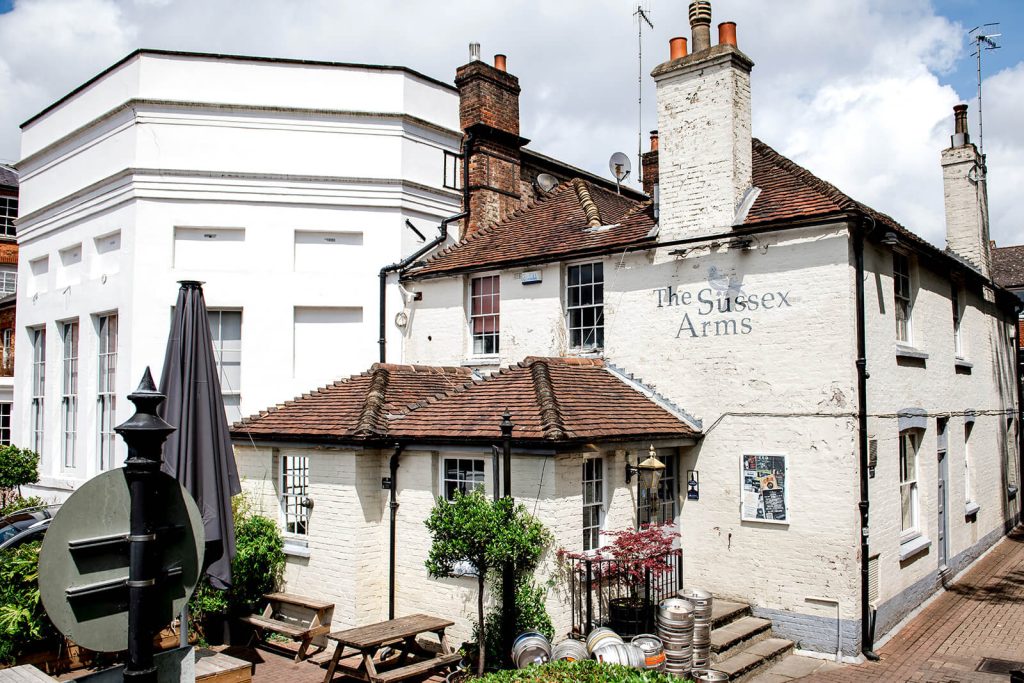
Heraldry in Pub Names
Using coats of arms for pub signs has been highly influential in shaping British pub names. Lions – golden, black, red, and white – have often been used in heraldry following the Norman conquest (the coat of arms attributed to William the Conqueror was two golden lions on a red shield).
The Red Lion is the second most common emblem in coats of arms (the cross being the first), and historians are split as to its origins. Some theories suggest it stems from the personal badge of John of Gaunt, founder of the House of Lancaster.
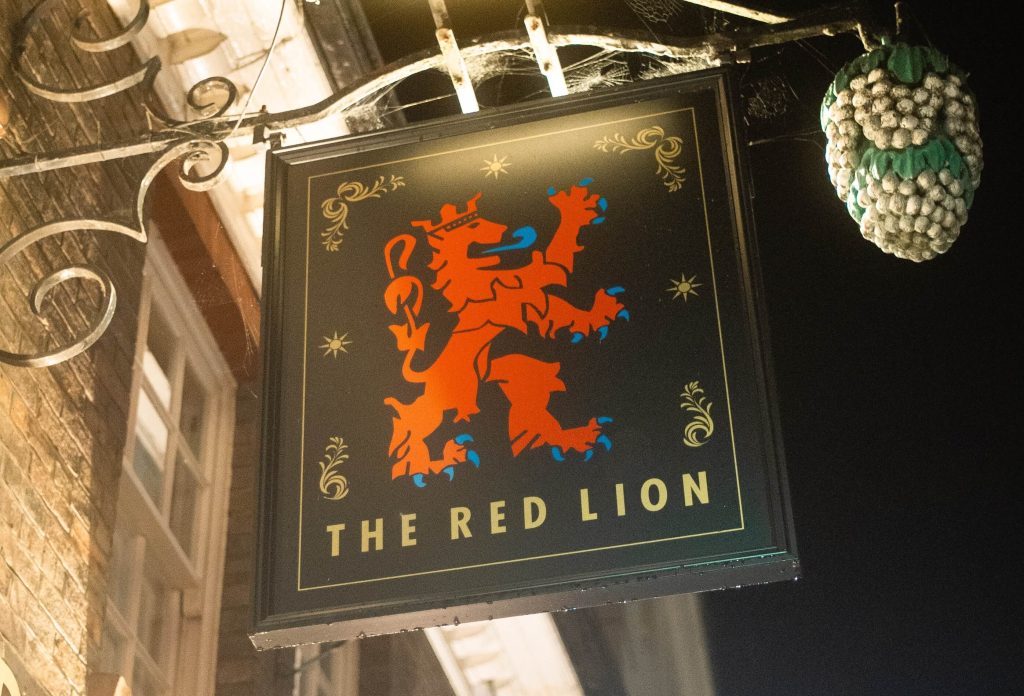
Whatever its origins, The Red Lion is the most common pub name in Britain today.
But the lion isn’t the only emblem common in heraldry-themed pub names. Red Dragons stem from the Welsh coat of arms, The Unicorn from the Scottish coat of arms, Blue Boars from the Earls of Oxford, and The Swans from the personal badges of several Lancastrian figures.
Pub Names with Animals
While animals matched with colours, such as The White Hart, The Red Lion, and The Blue Boar originate from heraldry, animals paired with dogs, hounds, or guns suggest a historical connection to shooting and hunting.
Pubs such as The Fox & Hounds, The Dog & Duck, and The Hare & Hounds will likely be located near old hunting grounds.
Legends and Folklore in Pub Names
The Crusaders may have brought back the inspiring tales of St George battling and defeating a tyrannical dragon with his lance, Ascalon, but it wasn’t until 1327 that King Edward III made him the country’s official patron saint. Today, pubs up and down England – and even a few in Wales – are named The George & Dragon in his honour.
Names such as Fiddler’s Green and The Green Man are inspired by folklore. Fiddler’s Green is an after-life especially reserved for sailors who had served at least 50 years on the sea, while The Green Man – often depicted as a man dressed in green foliage – was related to the European motif of the Wild Man seen in masonry and art across the continent.
Livery Companies, Trade Guilds, and Occupations
Many pubs in the UK are named for the predominant trades that existed in the area at the time. These pubs are easy to identify – they have names such as Bricklayer’s Arms, Mason’s Arms, Carpenter’s Arms, and Blacksmith’s Arms.
Pubs that begin with the number “Three” are usually inspired by the arms of one of London’s Livery Companies or trade guilds. These include pubs such as The Three Arrows (the emblem of the Worshipful Company of Bowyers), The Three Compasses (of the Worshipful Company of Masons), and The Three Tuns (of the Worshipful Company of Brewers.)
Pubs Names with Poetic and Literary References
While iconic figures, battles, and events inspired earlier pub names, some more recent pub names take inspiration from literature and poetry. The connections are sometimes quite obvious – as with The Sherlock Holmes – while others give only a subtle nod.
Our sister pub, The Ragged Trousers on the Pantiles in Tunbridge Wells, is named after The Ragged-Trousered Philanthropists by Robert Tressel.
While The Cat & Custard Pot seems like a peculiar pub name at first glance, it was inspired by Robert Smith Surtees’s novel Handley Cross or Mr Jorrock’s Hunt.
Charles Dickens fans will recognise the connection between the author and The Magwitch in Wisbech.
And finally, in his last essay written for the Evening Standard, George Orwell describes his ideal pub, which he calls Moon Under Water – a name that J D Weatherspoon has used for several of its pubs.
Top 10 Most Popular Pub Names in the UK
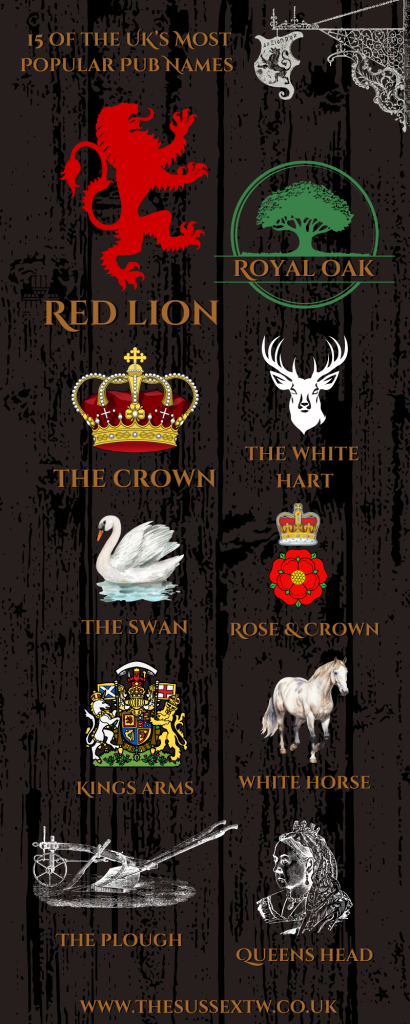
Significance of Pub Names Today
One of the fascinating aspects of looking at the origins of British pub names is following their evolution over time. Pubs were first named for the objects diligently selected and placed at the door by their owners, and ultimately, the signs were made to identify the establishments as pubs.
But uncovering the motivation and inspiration behind the names takes us on a journey chronicling significant events, lives, battles, and celebrations, offering a genuine insight into British social history.
Today, pubs have become an integral part of our community identity.
Sometimes, pubs play such a significant role in our community identity that entire areas are named after them. This is the case in London, where six tube stations (and their surrounding areas) are named after pubs: Manor House, Angel, Elephant & Castle, Royal Oak, Swiss Cottage, and Maida Vale (after The Hero of Maida pub).
And, sometimes, such is the locals’ sense of ownership over a pub that they rename it altogether. The Eagle and Child in St Giles’, Oxford, for example, was nicknamed “the Bird and Baby”, and our pub in Tunbridge Wells, The Sussex Arms, was formerly known as The Sussex Shades due to it sitting next to, and being overshadowed, by the Sussex Hotel – a much larger building.
Whether your favourite pub derives its name from historical events, mythology, or pop culture, the next time you find yourself seated with a pint, take a few moments to appreciate the sign above the door and the remarkable stories that inspired it!
Looking for the best places to eat in town? Check out our guide on the best eateries and restaurants in Tunbridge Wells!
